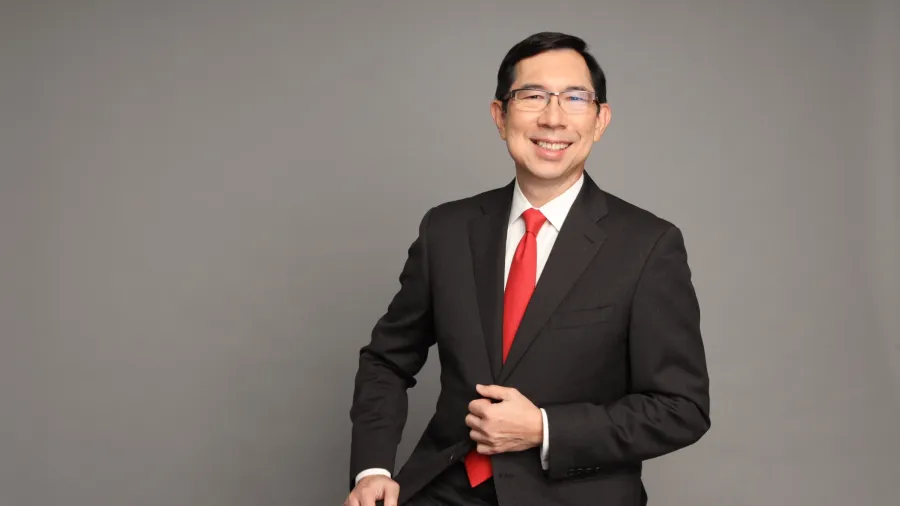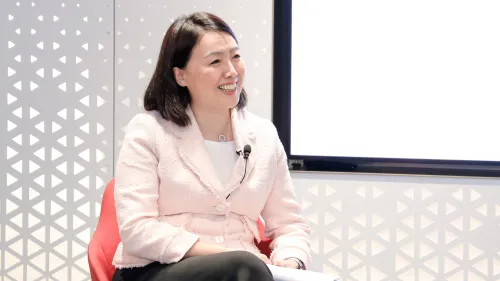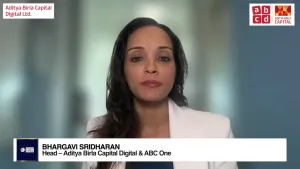
TG Limcaoco on how 170-year-old BPI is reinventing itself in the digital era
For BPI, reinvention and innovation are the key ingredients to how it remains one of the Philippines’ biggest banks since its establishment over 170 years ago.
Today, the bank has set its sights on an ambitious goal: to be the undisputed leader in digital banking.
“The pandemic has accelerated digital banking adoption among Filipinos, and all indicators say that there’s simply no turning back. If we truly want to be the Philippines’ undisputed banking leader, we must ensure that each and every one of our customers, without exception, has digital access to our services and products,” Jose Teodoro “TG” Limcaoco, President and CEO of BPI, told Asian Banking & Finance in an exclusive interview.
Since assuming the leadership of BPI in 2022, Limcaoco has pushed BPI’s position as a pioneer in local banking — the very quality that has allowed it to thrive in every era.
“We doubled down on digitalisation over the past two decades as online banking transformed into mobile banking. We brought banking services that were only available on desktops to smartphones,” he said.
“BPI’s spirit of innovation has enabled the bank to become a pioneer in various aspects of banking. In the 1980s, BPI launched the Express Teller system and introduced the first 24-hour ATM service in the Philippines. We later on launched the country’s first debit card system. In the 1990s, BPI began offering phone banking and then introduced Express Online,” Limcaoco added.
More recently, BPI introduced the mobile wallet in 2012 for retail payments, the country’s first bank-initiated contactless payment system.
ALSO READ: Bank of the Philippine Islands relocates main office temporarily
Its latest reinvention has borne fruit in 2022. BPI reported a record net income of PHP39.6b (US$716.36m) in 2022, 66% higher than in 2021, thanks to strong loan growth, higher net interest margin, and lower provisions. In its most recent quarterly results, BPI posted a net income of PHP12.1b (US$218.77m), 52% higher than in the first quarter of 2022.
As of December 2022, BPI has nearly six million clients enrolled in digital channels and nearly four million active users across all digital platforms, and has facilitated 375 million transactions.
Limcaoco sat down with Asian Banking & Finance to share more about BPI in the modern banking era, his thoughts on the future of financial services across the region, and what inspires him in his daily life as CEO of Southeast Asia’s oldest bank.
What’s it like to be the CEO and president of a bank that bears such a long history?
As the President and CEO of the oldest bank in Southeast Asia, I am acutely aware of the challenges that come with leading an institution with such a long and storied history. We have weathered many changes over the years, including wars, economic crises, and political upheavals. However, the current era of massive digital and regulatory changes presents a unique set of challenges and opportunities that we must address to remain relevant and competitive.
On one hand, we must embrace digital transformation and leverage emerging technologies to improve our operational efficiency, enhance customer experiences, and enable innovative products and services. This requires significant investments in technology and talent, as well as a willingness to adapt our business models and processes to the digital age.
On the other hand, we must navigate a rapidly changing regulatory landscape that demands greater transparency, accountability, and compliance. We must be vigilant in ensuring that we meet these requirements whilst maintaining our commitment to customer confidentiality and trust.
Tell us more about yourself. What’s your career like? What led you to the path of becoming a banker, and eventually, the head of BPI?
Many people assume that my entire career was spent in banking and finance, which is fair, given that most senior bankers do begin and end their professional lives in the field — in some cases, within the same institution that gave them their first jobs. How I got here is actually through a series of personal and professional reinventions.
After having earned my Mathematical Sciences degree, I started out in Silicon Valley as a programmer/analyst in a tech firm. This was the early ’80s and tech was the industry to be in. With Stanford (where I studied) being just a stone’s throw from The Valley, going into tech felt like the natural thing to do.
It would have been the comfortable thing for me to stay. I enjoyed it well enough, and coding remains a casual hobby of mine. However, my early love for banking and finance never really died out.
I’ve wanted to be a banker since I was young, due to my innate love for numbers and having been raised by a banker dad. So, when I had the opportunity to take postgraduate studies, I opted for an MBA rather than a master’s in computer science or engineering as many of my peers did, in hopes of reinventing my career path towards finance. That Wharton MBA did lead to my first banking job in New York. My stint at JPMorgan was soon followed by an invitation to return home as a manager in corporate finance with BPI.
I’d love to say at this point that “the rest is history” and that my banking career was a straight trajectory to where I am now. However, the path to success is rarely easy or simple.
I didn’t stay very long in BPI after my first assignment. I moved back and forth quite a bit among BPI, global banks, and Ayala Corporation before I found myself home — for good — at the helm of the bank I love.
How I got here was a combination of many things: a very supportive family, lots of hard work, carefully cultivated relationships, serendipity, and my own willingness to take chances and to reinvent myself.
ALSO READ: Less Filipinos fall short of meeting credit card payments
What are your priorities as leader of BPI?
One, to be the undisputed leader in digital banking. The pandemic has accelerated digital banking adoption among Filipinos, and all indicators say that there’s simply no turning back. If we truly want to be the Philippines’ undisputed banking leader, we must ensure that each and every one of our customers, without exception, has digital access to our services and products.
Two, increase the share of SMEs and consumers in our loan book. Collectively, SMEs employ over 60% of the Filipino workforce. Supporting them through financial products that help grow and sustain their businesses positively impacts and helps secure the future of ordinary hardworking Filipinos.
Three, close the gap in funding leadership. We want to be the leader and increase our market share in the industry.
Four, establish the new role of branches as sales points and not only as service points. Branches will remain an integral part of BPI, but I believe their greater potential lies in providing financial advisory services and financial literacy sessions for customers, and as a space where our customers can explore the many ways in which we can help improve their financial well-being.
Five, set the standard for sustainable and responsible banking. We will strive to be more inclusive and reach out to the underserved. For us in BPI, it is actually ESG + E. It is a formula unique to us, where the last E stands for Economic Growth, since we cannot be truly sustainable unless we consider economic growth not only for our customers but also for our country.
Could you share with us BPI’s growth targets over the next 12-24 months?
Our strategy remains the same — stay true to our roots and be focused on our journey of banking excellence anchored on trust and the best digital offers.
Our goal for this year is to surpass our achievements from the previous year. Our strategic plan is to maintain our competitive edge, expand customer base and increase shareholder value. We aim to be the undisputed leader in digital banking, achieve a greater share of SME and consumer loans, close the gap in funding leadership, and transform the role of branches in the new normal.
From here on and until 2026, we will continue to focus on our key strategic priorities of digitalisation, customer obsession, and sustainability. We will be growing the BPI ecosystem through digitalisation and capitalise on technology to serve the needs and anticipate the wants of our different market segments. We will carry on with initiatives to nurture our relationships with our clients and make their lives easier.
Lastly, we will strengthen our efforts to champion sustainability. We will help create a sustainable future by further incorporating ESG principles in the way we do business, whilst ensuring concrete economic benefits are derived from these sustainability initiatives.
What would you say are the current concerns and challenges affecting the Philippine banking industry?
Whilst demand for services worldwide has remained firm, manufacturing may underperform in the coming year as demand for goods continues to slow. Higher cost of living and borrowing costs in most major economies is the main culprit and has increased the probability of recession.
A prolonged period of elevated inflation may also drag consumer spending in the Philippines in 2023. Better access to consumer credit since 2022 has offset some of the drag from inflation but is not expected to avert an impending slowdown in consumption.
ALSO READ: BPI Wealth tasked by PH state insurance to manage $45m investment fund
Another factor that could pull down growth in 2023 is the increase in interest rates. Monetary policy usually works with a lag, and the full impact of rate hikes in 2022 will likely be felt more in 2023 and in early 2024. Higher refinancing costs may discourage businesses from ramping up their capital expenditures, which is historically proven to be a key driver.
But despite these circumstances, Philippine banks will stay resilient amidst headwinds. Interest rates have gone up, but the impact on economic activity and lending will not be disruptive. A manageable slowdown in loan growth may happen as businesses adjust to higher rates. Still, our country will do well, supported by a young, confident, digitally oriented population. BPI will do just as well, as we focus on this segment to help build a better Philippines.
In your opinion, what does the future of banking look like — and where do you see BPI in this said future?
The future of banking will still focus on digitalisation and sustainability. New technology and new players in the industry will come in, impacting the competitive landscape. There will be an increase in digital savvy and young consumers who may view banking services differently from the traditional view of previous generations.
On the other hand, we see an evolving regulatory landscape with the thrust toward digitalisation, sustainability, and financial inclusion of the BSP (Bangko Sentral ng Pilpinas or the central bank) and SEC (Securities and Exchange Commission). New laws may affect the traditional operating model, credit card caps, amongst others.
As for BPI, aside from our digital transformation journey, we will continue to focus on customer obsession. Likewise, we shall move forward with sustainability as core to our business and an integral factor on how we make decisions. We will remain focused on banking excellence anchored on trust and the best digital offers.
We are determined to make banking products and services more accessible to more people.
















 Advertise
Advertise




